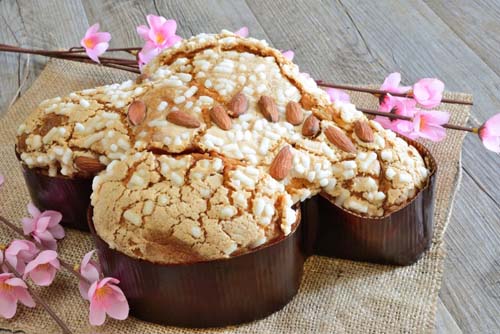Italy: The story of Easter cake – Colomba

Rome: The traditional ‘dove-shaped’ Colomba di Pasqua or Colomba pasquale has been a firm fixture on the Easter calendar in Italy for almost a century.
Its origins date back to the 1930s to Motta, a company in Milan already famous for its Panettone and Pandoro, two classic sweet breads associated with the Christmas season in Italy.
The Colomba was dreamed up as a way of using the same baking equipment and many of the same ingredients to cash in on the Easter market. The plan worked.
The Colomba was commercialised by the Milanese baker and businessman Angelo Motta and marketed successfully by his advertising director Dino Villani.
In the 1940s the recipe was taken up by Angelo Vergani who founded Milan’s Vergani company which still produces colombe today.
So what exactly is the Colomba made from and what is the difference between it and Panettone?
The dough for the Colomba is produced in a similar way to Panettone, with flour, eggs, sugar, natural yeast and butter.
After being fashioned into a ‘colomba’ or dove shape, the dough is topped with icing and almonds before being baked.
Whereas the Panettone contains raisins and mixed candied fruit, Colomba contains only candied orange peel and no raisins, with a sugary almond topping.
There are also differences in form, with the Panettone dome-shaped and the Colomba in the shape (more or less) of a dove.
These days the Colomba comes in a variety of versions with flavours including chocolate, cherry, pear and pistacchio.
The best bakeries and pastry shops to buy the typical Easter cake, according to expert restaurant guide Puntarella Rossa, include favourites such as Roscioli, Panificio Bonci, Casa Manfredi and Le Levain.





